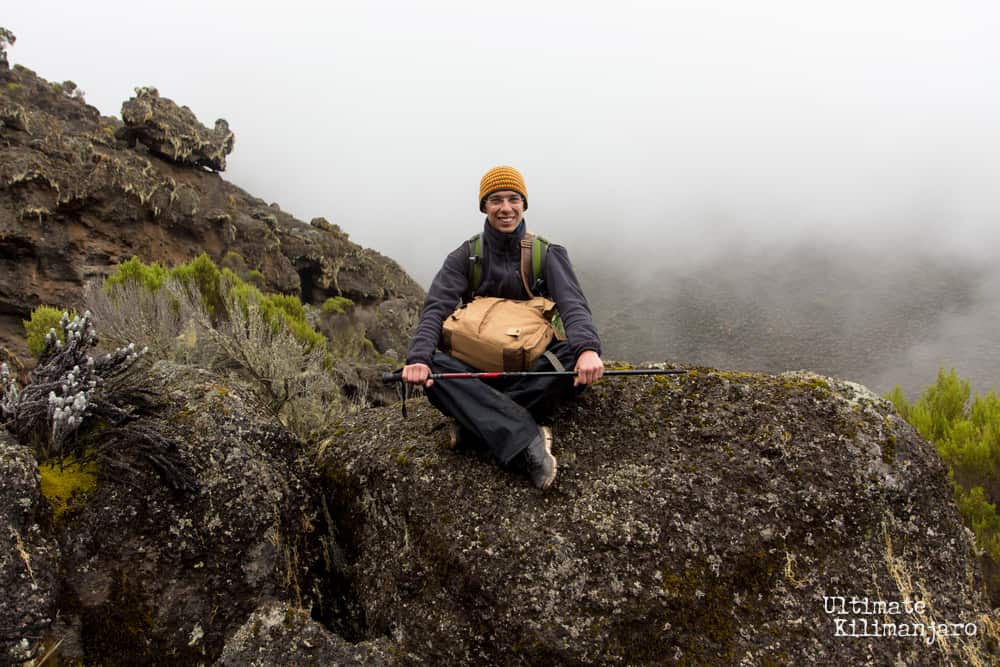Diamox is a brand name of a prescription drug known as acetazolamide. The medication is used for a variety of purposes including the prevention and treatment of AMS. The Food and Drug Administration (FDA) first approved acetazolamide in 1953.
The medication acidifies the blood, which causes an increase in respiration, thus accelerating acclimatization. Studies have shown that acetazolamide at a dose of 250 mg every eight to twelve hours before and during rapid ascent to altitude results in fewer and/or less severe symptoms of acute mountain sickness (AMS).
How Does Diamox Work?
It is actually quite fascinating how it works in the body.
Ninety percent of the blood’s carbon dioxide exists in a chemical called bicarbonate. Acetazolamide facilitates the body to excrete bicarbonate, which makes the blood more acidic.
When the blood gets acidic, the body believes that it has more carbon dioxide in it. To get rid of this excess carbon dioxide, the body increases ventilation. In other words, the user breathes deeper and faster, getting rid of the carbon dioxide, but also taking in more oxygen. So the medication works by acidifying the blood, which causes an increase in respiration, which increases oxygen intake, thus accelerating acclimatization.

The manufacturer of Diamox states that in their tests:
“pulmonary function (e.g., minute ventilation, expired vital capacity, and peak flow) is greater in the acetazolamide treated group, both in subjects with AMS and asymptomatic subjects. ”
This is ultimately what helps prevent and treat altitude sickness or acute mountain sickness (AMS). Without the medication, to adapt to higher altitude, the body counteracts the decrease in oxygen in the atmosphere by instinctively breathing faster and deeper.
Acetazolamide does the same, albeit through chemistry, to speed up the acclimatization process.
Does Diamox Mask Symptoms of AMS?
Diamox does not mask the symptoms of AMS. It treats AMS.
The FDA has approved the use of Diamox to prevent and treat altitude sickness. Therefore, if you feel relief from AMS symptoms after taking it, you are actually better.
The manufacturer recommends Diamox be used as a preventative measure, taken 24-48 hours prior to rapid ascent and throughout your climb (until descent). But some people use it as a treatment, taking it only when symptoms of AMS arise. The medicine should be continued until you are below the altitude where symptoms became bothersome.
Diamox is used for other purposes, like treating glaucoma, epilepsy and fluid retention. So it’s worth noting that the drug may be doing other things in the body besides increasing pulmonary function.

Should I Use Diamox to Climb Kilimanjaro?
It is a personal choice of the climber whether or not to take the medication as a preventative measure against AMS.
One should not take any drug without considering all the consequences, whether good or bad. And that’s why Ultimate Kilimanjaro® neither recommends using Diamox nor discourages using it. The decision is up to the climber.
For those who have hiked at high altitude before, you might have an idea of where your acclimatization limits are in terms of rate of ascent. If you do, then reviewing the route profile and itineraries will be helpful in your decision whether or not to use the presciption. Those who are confident in their ability to acclimatize probably would not choose to use it.
For those who have not tested themselves at high elevations, the choice is much harder. Nearly everyone would like to summit without taking the drug. But at the same time most people would rather summit with Diamox than not summit at all. And because of this, taking Diamox for most people makes sense, as it improves the probability of reaching the top. It also increases the level of safety.
What are the Side Effects of Diamox?
There are some side effects to taking the drug.
These side effects include: tingling hands, increased urination, hearing loss, taste loss, lightheadedness, upset stomach, vomiting, and diarrhea.
Unfortunately, some of the side effects of Diamox are the same as the symptoms of AMS. So it is very possible that the side effects might be mistaken for AMS and you’d be turned around on the mountain when you might have felt fine without it.
To avoid this scenario, you should be absolutely sure that you don’t have an adverse reaction to acetazolamide before using it on the mountain. It’s important that you take it for a day or two while in the comfort of your home to see what the effects are. If you experience any side effects that might be confused with altitude sickness, or any side effects that you’re not OK with, it’s probably best that you don’t use it on Kilimanjaro.
People who are allergic to sulfonamide should not take Diamox. It has also been known to cause allergic reactions to people with no previous history of Diamox or sulfa allergies.
How Do You Take Diamox for Altitude Sickness?
You should start taking Diamox 24-48 hours prior to exposure to high altitude. Continue to use it for the entire duration of the ascent and at least 48 hours after you have reached your final altitude. The recommended dosage is 125 mg twice per day.
Acetazolamide comes in extended-release capsules that contain 500mg of the drug, and regular-release tablets of 125 mg, 250 mg, and 500 mg.
There are other medications and natural supplements that combat altitude sickness. You can read about these in the articles below.



















































